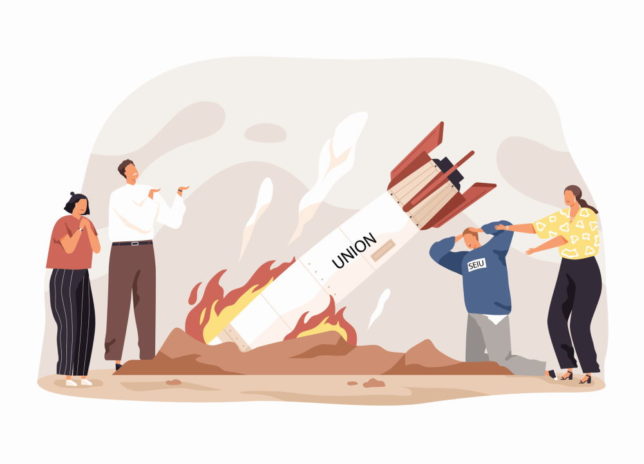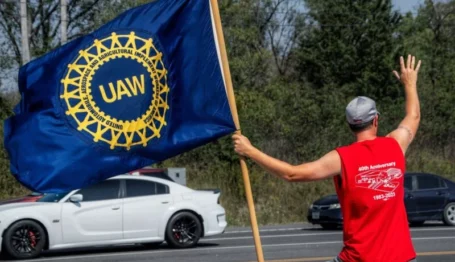Labor Watch
Labor’s Launch Aborted


If you read the metropolitan-liberal press, 2022 was the year that organized labor began the long march back to relevance, with massive organizing campaigns winning victories at the commanding heights of the American economy like Amazon, Starbucks, and Microsoft. This was the year that Big Labor would reverse its long decline as youth and students in white-collar professions organized for worker power based on cultural-left interests.
And then the data came out.
Same Old Story
On January 19, the Bureau of Labor Statistics released its annual estimates of union membership and union density (the proportion of the nonfarm workforce that is unionized). It was not consistent with tales of a workforce ready to re-enact Walter Reuther’s sit-down strikes of the 1930s or eager for Andy Stern’s intellectual descendants to card-check them into a special interest group that is a member of the Democracy Alliance.
Union density hit its lowest level on record, with only 10.1 percent of the workforce being union members. While union membership rose by 273,000, that increase did not keep up with the broader increase in employment, so the membership rate fell. It is in so many ways the same old story: Workers, especially those in the private sector, are not choosing unionization, and the non-union sectors of the economy are growing employment faster the unionized sectors.

Credit: Doug Henwood/LBO News. License: Creative Commons.
The Unionists Respond
Big Labor’s supporters responded predictably, by calling for more coercive labor organizing regimes. Newly elected Sen. John Fetterman (D-PA) demanded the passage of the Protecting the Right to Organize Act (PRO Act), which would vastly expand unions’ coercive power over workers and the broader economy. The Niskanen Center, the formerly supposedly libertarian-ish think tank that is (was?) a linchpin of the eco-Right, put out a symposium on “ways to build up labor influence moving forward,” with contributors promoting, among other things, sectoral bargaining and the PRO Act.
As is so often the case with supporters of Big Labor, the “solution” to American workers rejecting labor unions must be to force them into labor unions. I am sure this has nothing to do with the support organized labor gave to Sen. Fetterman’s campaign and his Democratic Party, or with the support organized labor provides to Niskanen’s allies in the environmentalist movement and the environmental, social, and corporate governance (ESG) investing campaign.
It Doesn’t Get Better
The liberal press had good reasons to hope that 2022 was different for union organizing. The high-profile campaigns at Starbucks and Amazon won some early successes, and the campaigns’ apparent independence from “Big Labor” even intrigued some right-leaning figures. (They should have averred; “little labor” either was in fact Big Labor, in the case of the SEIU-backed campaign against Starbucks, or was just as if not more radical than Big Labor, in the case of the Amazon Labor Union.)
Economic conditions also should have favored labor organizing, given low unemployment and a “worker shortage.” But nonunion gains outstripped union gains, and when the economy turns, those newly unionized workplaces will be at a disadvantage against more flexible union-free counterparts. (Ask the unionized Vox Media writers how this ends.)
Rather than attempting to revive the dinosaurs in Big Labor with increasingly coercive laws designed to move money into left-wing political campaigns and ideological infrastructure as much as anything else, it is time to move on to a new workforce relations regime that represents the American worker as he or she is in the 2020s, not the 1920s.



